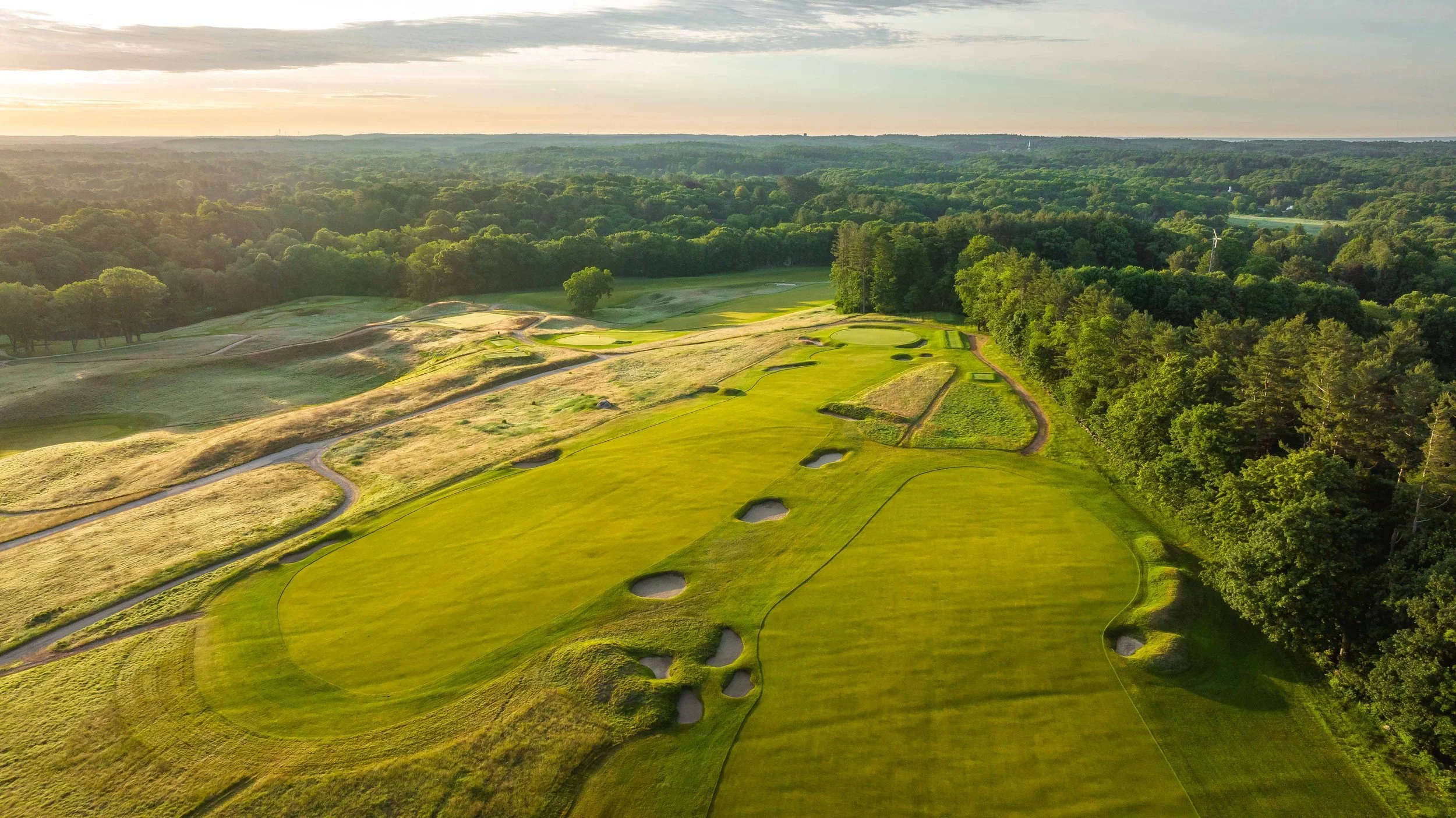The Grounds: Lesson 5- Herbert Leeds - Walker Simas
Massachusetts was a hotbed of activity in the mid-1800s. Factories hummed with production, ships dotted the vibrant harbor, and the streets of Boston teemed with a diverse array of people. It was against this backdrop of industry and commerce that Herbert Leeds, affectionately known as "Papa", came into the world on a crisp January day in 1855.
Industrial Revolution in full swing - banking, shipping, publishing.
Rapid urbanization and population growth in the Boston area.
Herbert Leeds had a life of opportunity that many could only dream of. He was a peculiar man and most likely misunderstood, as there is so little information available about him outside of a few books closely held at a few clubs. Yes, Leeds lived in a bubble of wealth, but there is still so much mystery about who he really was.
Well, what do we know? Or, better put - what do we think we know about Leeds?
Herbert was raised in a household that was rubbing shoulders with the who's who of Boston society. He began his education at Hopkinson's School in Boston and later at Harvard College, thriving both academically and athletically. His time at Harvard was marked by notable contributions to the baseball and football teams. After he completed schooling in 1877 For one reason or another, he needed to get out. The next 8 years he traversed the globe from China to Paris, Indonesia to India, and capped it off with a tour of the western U.S. He was a proficient sailor and bridge player, to add.
In writing this series, a theme that was apparent at the beginning has become shattered and broken. Not to my surprise, but an important point as we progress here. As golf formed its footing as a leisure pursuit in the British isles in the late 19th century, those who elevated the game “dug it out of the dirt”.
Old Tom Morris, James Braid, and Willie Park Jr. started their lives in relatively humble roots. Yes, some more than others- nobody is the same. Each of them had a mentor, a teacher, a family member, access, or lived in such close proximity to golf being played. This was their beginning. Emerging from working class beginnings, they all became well known through their outstanding play. As we know, performance is hard to refute. If you earn the trophy, you earn the respect, and there’s not much anyone can do about it. It was upon this earned respect - this earned proficiency - often well rounded, that gave them the opportunity to do design work. As for what they made of it, you’ll have to read the prior newsletters.
It was when we reached C.B Macdonald where that framework began to tear. Not that Charles Blair didn’t earn his stripes on the golf course, or in his career in finance, or in his collaborations with Seth Raynor- it was that he had a unique advantage- a network. It was a unique combination of skillset and opportunity he took advantage of, providing golf courses that were inspired by the land that inspired him, to a swath of wealthy businessmen in New York and Chicago, to get him started.
So, when investigating Herbert Leeds I do find it necessary to meditate on the unique position he found himself in - living off of trusts, almost a decade of travel under his belt, and a complete open mindedness to what it was he wanted to do with his life.
It’s important to note that researching these architects can be tricky business. There is plenty of hearsay involved, and ultimately Leed’s lifestyle doesn’t matter when we are purely speaking about the routing of Palmetto Golf Club, or the greens at Myopia Hunt Club. With that said, my main curiosity with this series is to tie together the lives of the player-architects who changed the game forever. In doing that, it’s important that each newsletter builds upon the last, so that by the end (Ben Crenshaw), we can make sense of how we arrived here. It is for that reason I mention the position that Leeds found himself in, not because I take some sick pleasure in exposing his privilege or competitive advantage. In the mid 1890’s and into the early 20th century, if someone was designing golf courses for a living, its worth understanding why they were in the position to do so.
The term player-architect probably requires a re-hashing. Jack Nicklaus and Gary Player had not yet graced us with their presence, nor third-leg Greg, so we are not tied to professional players who took a crack at building golf courses. Mainly, I made an assumption early on which turned out to be mostly accurate, which was that those who created golf course architecture were proficient players of the game. In this series, we will only cover those who had an ability to score matched with the ability to design interesting golf.
In 1889, Leeds was 34 and to my knowledge, a complete stranger to playing the game of golf. The Country Club at Brookline was founded in 1882, and the social circles there and elsewhere were hardly unfamiliar to Leeds. He walked right in. Miraculously, while becoming a world class sailor, he took onto the game quickly. By the mid-1890’s he was one of the best, if not the best player in Boston.
Case Studies:
Myopia Hunt Club
Patrick Koenig
Located in South Hamilton, Massachusetts (Founded 1879).
Initially focused on fox hunting and steeplechase racing.
Introduced golf to its grounds in 1894 (9 holes by Herbert Leeds).
Rough terrain, thin soil, rolling ground, blind shots, and treacherous slopes.
This type of land was considered unconventional, or unsuitable, for golf.
Providing input were: R.M. Appleton, Squire Merrill, and A.P. Gardner.
Hosted its first golf tournament in June 1894 (Leeds won)
Played a role in the early development of golf in the United States.
In 1894, <50 courses in the U.S. In 1900, there were >1,000 (Golf Club Atlas)
Leeds formally joined Myopia Hunt Club in 1896.
Appointed to the Golf Committee and tasked with laying out the Long Nine.
Placed greens on the edges of challenging terrain.
Dug hazards in perplexing locations, used fill to add vertical pop elsewhere.
The Long Nine was considered one of the most challenging courses in the U.S.
Leeds became Myopia's Club Champion in 1896.
Also won the Myopia Handicap Cup in 1898.
Myopia offered its course for the 1898 U.S. Open (Leeds won low-am).
The 1898 U.S. Open there was the first to require 72 holes of medal play.
Expanded Myopia's course to 18 holes in 1898-1899.
Appointed as Myopia's Captain of the Green in 1907. Held until 1917.
Continued to refine Myopia's layout over the years.
Similar to Oakmont and others, paid close attention to how the course was played.
Added bunkers or hazards based on players' tendencies.
Palmetto Golf Club
Leeds traveled to Palmetto in Aiken, South Carolina in early 1895.
Assisted in expanding their initial 4-hole course to nine holes, totaling 2,278 yards.
Won the second and fourth contests of the first Southern Cross Tournament (1896, ‘98)
Frequented winter trips to Aiken, a common practice among Boston area residents.
From 1895 - 1897, expanded the course to 18 holes
Accompanied by Scottish professional Jimmy Mackerell, Palmetto's first professional.
The greens were made of sand, ~60 feet in diameter and perfectly level.
The course was considered extremely challenging, mostly due to terrain.
Incorporated ravines, creeks, and stone walls into the course design.
Added cross and greenside bunkers, some as deep as four feet
This was a continuation of his work at Myopia.
Named holes with distinctive titles such as "Crazy Creek" and "Rat Trap."
Dr. Mackenzie converted the sand greens to grass in 1932.
He (Mackenzie) also lengthened the course, coming off of his work at Augusta National.
Since then, architects Jones, Doak, Hanse, and Goalby have done subtle work.
My Notes:
What stuck out to me most about Leeds was his desire to understand the golfer. He was not a perfectionist, which I found relieving. It seems that he took pride in the iteration of his designs, not flocking to the next project wanting or needing to create more. He was interested in better- in feedback- in exposing the weaknesses of players ability and minds. In an era (today) where massive earthmoving is not out of the ordinary, it’s fascinating to see how just a few (comparatively) cubic yards of dirt, placed in the right spots, could create for such an honest yet maddening test of golf. Moreover, the reports of Palmetto being so perplexing given the flat, circular nature of its greensites tell an even better story of the land and features that Leeds chose to work with.
I’ve been fortunate to play Palmetto many times in competition, and recreationally as well. Though what I’ve seen is an amalgamation of many different hands, mostly Mackenzie- walking the routing at Palmetto tells me something about the course I’ve never played - Myopia.
The land does the talking.
Hazards are small in size, and massively penalizing.
Greens are the ultimate defense.
Thanks for reading,
WS










